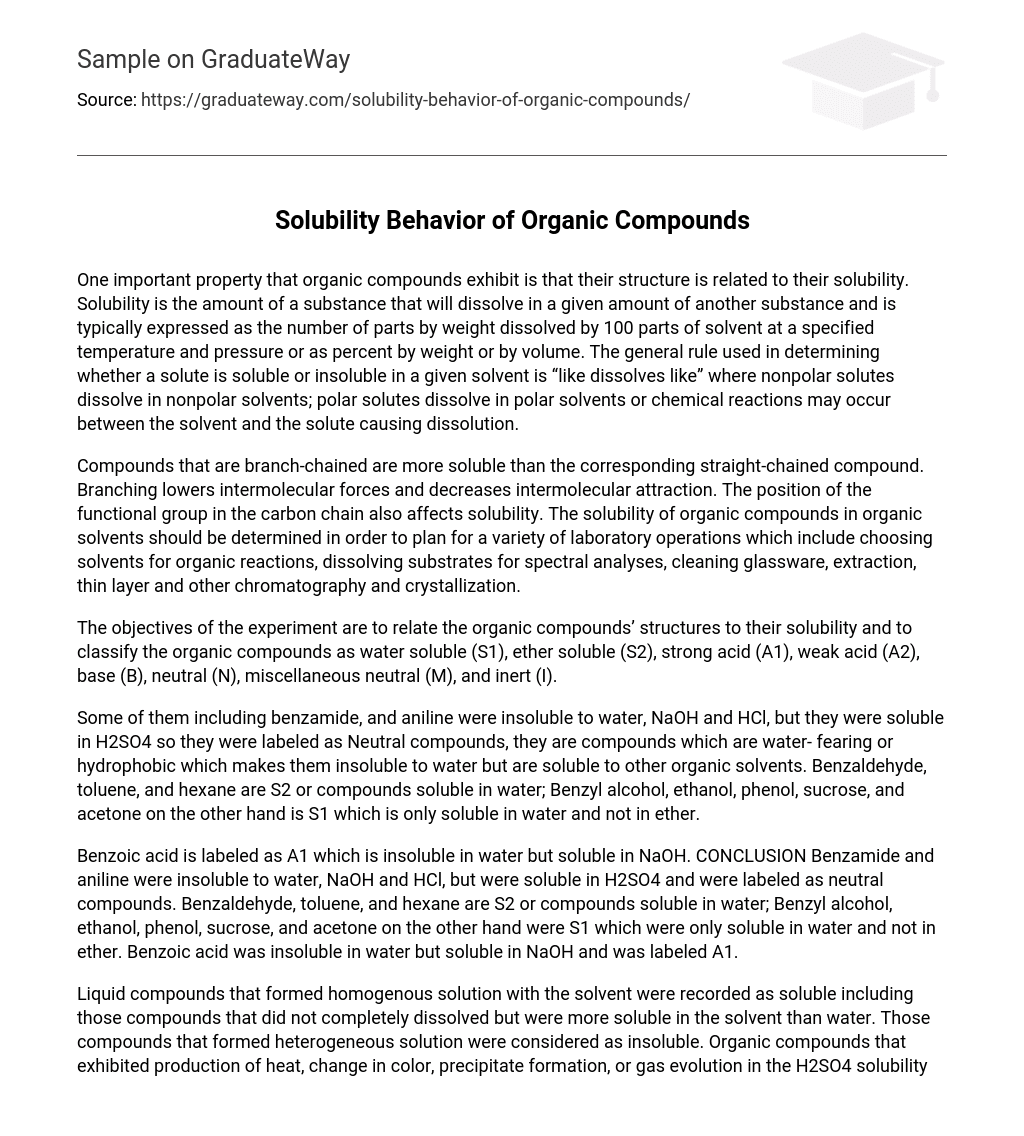One important property that organic compounds exhibit is that their structure is related to their solubility. Solubility is the amount of a substance that will dissolve in a given amount of another substance and is typically expressed as the number of parts by weight dissolved by 100 parts of solvent at a specified temperature and pressure or as percent by weight or by volume. The general rule used in determining whether a solute is soluble or insoluble in a given solvent is “like dissolves like” where nonpolar solutes dissolve in nonpolar solvents; polar solutes dissolve in polar solvents or chemical reactions may occur between the solvent and the solute causing dissolution.
Compounds that are branch-chained are more soluble than the corresponding straight-chained compound. Branching lowers intermolecular forces and decreases intermolecular attraction. The position of the functional group in the carbon chain also affects solubility. The solubility of organic compounds in organic solvents should be determined in order to plan for a variety of laboratory operations which include choosing solvents for organic reactions, dissolving substrates for spectral analyses, cleaning glassware, extraction, thin layer and other chromatography and crystallization.
The objectives of the experiment are to relate the organic compounds’ structures to their solubility and to classify the organic compounds as water soluble (S1), ether soluble (S2), strong acid (A1), weak acid (A2), base (B), neutral (N), miscellaneous neutral (M), and inert (I).
Some of them including benzamide, and aniline were insoluble to water, NaOH and HCl, but they were soluble in H2SO4 so they were labeled as Neutral compounds, they are compounds which are water- fearing or hydrophobic which makes them insoluble to water but are soluble to other organic solvents. Benzaldehyde, toluene, and hexane are S2 or compounds soluble in water; Benzyl alcohol, ethanol, phenol, sucrose, and acetone on the other hand is S1 which is only soluble in water and not in ether.
Benzoic acid is labeled as A1 which is insoluble in water but soluble in NaOH. CONCLUSION Benzamide and aniline were insoluble to water, NaOH and HCl, but were soluble in H2SO4 and were labeled as neutral compounds. Benzaldehyde, toluene, and hexane are S2 or compounds soluble in water; Benzyl alcohol, ethanol, phenol, sucrose, and acetone on the other hand were S1 which were only soluble in water and not in ether. Benzoic acid was insoluble in water but soluble in NaOH and was labeled A1.
Liquid compounds that formed homogenous solution with the solvent were recorded as soluble including those compounds that did not completely dissolved but were more soluble in the solvent than water. Those compounds that formed heterogeneous solution were considered as insoluble. Organic compounds that exhibited production of heat, change in color, precipitate formation, or gas evolution in the H2SO4 solubility test were considered as soluble. The experiment was successful, with the solubility of all the test compounds in the given solvents determined and classified as water soluble (S1), ether oluble (S2), strong acid (A1), weak acid (A2), base (B), neutral (N), miscellaneous neutral (M), and inert (I).





